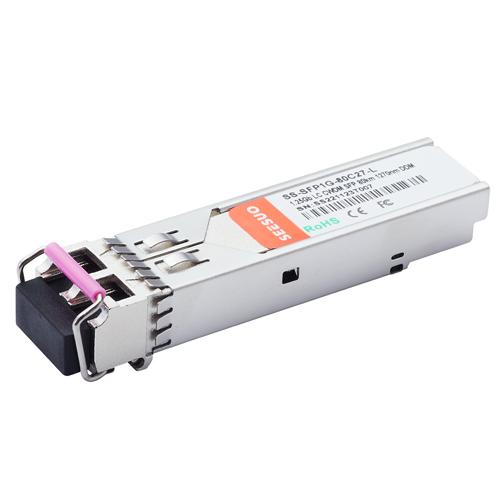- Related articles
- All Cisco GLC-ZX-SMD's information (List price, Specs, Datasheet PDF, Compatibility matrix
- All Cisco QSFP-4X10G-LR-S's information (Overview, List price, Specs, Datasheet PDF, Compa
- Difference between 100BASE T and 100BASE TX
- The Things You Need to Know about 10GBASE-R Ethernet Standards
- Optical Transceivers for Cisco WS-C3560V2-48PS-S Switch
- All Cisco DWDM-X2-35.82's information (List price, Specs, Datasheet PDF, Compatibility mat
- How to Change PCI-E Speed?
- The Difference between CSFP and X2
- Optical Transceivers for Cisco WS-C3650-48FD-L Switch
- All Cisco GLC-FE-100BX-U's information (List price, Specs, Datasheet PDF, Compatibility ma

Definition
SFP transceivers are an interface with a motherboard, router, switch or optical media converter. Link connection into a fiber optic copper cable. Support SONNET, Fiber Channel, Gibe or similar standards. There are both multi-mode and single mode SFP transceiver types.
Single-mode SFP
Single-mode fiber (SMF) has much tighter tolerances for optics used. The core is smaller and the laser wavelength is narrower. This means that SMF has the capability for higher bandwidth and much longer distances in transmission. Single mode SFPs (SMF SFPs) work mainly in 1310nm and 1550nm wavelength and is mostly used in long distances transmission environment reaching 2km, 10km, 40km, 60km, 80km, and 120km. The color coded bale clasp and color arrow on the label are generally blue, yellow or purple. And the color of the compatible fiber optic patch cord is yellow.
Multi-mode SFP
Multi-mode fiber (MMF) uses a much bigger core and usually uses a longer wavelength of light. Because of this, the optics used in MMF has a higher capability to gather light from the laser. In practical terms, this means the optics is cheaper. The common multi-mode SFPs (MMF SFPs) work in 850nm wavelength and is only used for short distance transmission reaching 100m and 500m. Though it’s not able to transport for long distance, it can transport many kinds of optical signals. Their color coded bale clasp and color arrow on the label are black and the used fiber optic patch cord is usually orange.
Application
SFP sockets are found in Ethernet switches, routers, firewalls and network interface cards. Storage interface cards, also called HBAs or Fibre Channel storage switches, also make use of these modules, supporting different speeds such as 2 GB, 4 GB, and 8 GB. Because of their low cost, low profile, and ability to provide a connection to different types of optical fiber, SFP provides such equipment with enhanced flexibility.
Single-mode vs multi-mode transceiver
SFP transceivers are an interface with a motherboard, router, switch or optical media converter. Link connection into a fiber optic/ copper cable. Support SONNET, Fibre Channel, GbE or similar standards. There are both multimode and single mode SFP transceiver types.
Conclusion
SFP has found a vast array of applications. Some design considerations depend largely on the application. For certain terminal to terminal application, crucial factors including maximizing transmission speed and distance and minimizing fiber and splice loss. By contrast, connector loss becomes important in local area networks that operate within buildings. In other systems, it is important to minimize the cost of cable, with the intention of reducing the cost of terminal equipment.






































































